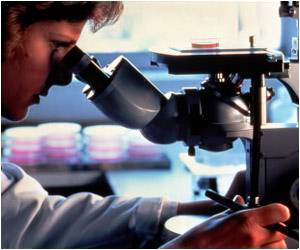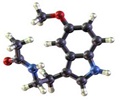Highlights
- Sleeping sickness is actually a circadian rhythm disorder
- Trypanosoma brucei is a parasite that causes the deadly sleeping sickness
- New therapeutic alternatives need to be developed, as currently available arsenic-based treatments can be fatal to patients
What is Sleeping Sickness?
Dr. Joseph S. Takahashi, Chairman of Neuroscience at UT Southwestern’s Peter O’Donnell Jr. Brain Institute and an Investigator with the Howard Hughes Medical Institute (HHMI) said that sleeping sickness is a misnomer and their work has revealed the underlying mechanism of altered sleep in this disease is caused due to a circadian disorder.
Sleeping sickness that was formally known as African trypanosomiasis is transmitted through the bite of the tsetse fly. The life of tens of millions of people in sub-Saharan African countries are threatened.
After the parasite enters the body causes symptoms like inverted sleeping cycles, fever, muscle weakness, and itching. The parasite slowly enters the central nervous system and, depending on the type of parasite, it can even kill the host in a few months, or it can even take several years.
Circadian Rhythm Disorder
"How the clocks are changing remains a mystery. We need to study further whether the host is producing a molecule in response to the infection, or if there is a secretion from the parasite," said Dr. Takahashi, who made the landmark discovery of the Clock gene in mice in the 1990s, which has laid the foundation for a new wave of medical research.
Dr. Takahashi also said that finding the causative agent can help in the development of drugs to treat the disease. Also, finding molecules that modulate the clock for treatment of other circadian disorders is also essential.
This is the second collaborative effort done by Dr. Luisa Figueiredo at the University of Lisbon in Portugal and Dr. Takahashi, who holds the Loyd B. Sands Distinguished Chair in Neuroscience. This collaborative study has been built based on the research that was published last year, which revealed that parasites also have biological clocks.
Link between Circadian Cycle and Sleeping Sickness
In this study, the research team revealed that the circadian cycle provides the sleeping sickness parasite - Trypanosoma brucei more vulnerable to medications in the afternoon.
The arsenic-based treatments that are available now are used to eradicate the parasite. However, many patients cannot handle the side effects of this treatment. In such cases, these findings can be beneficial to those patients.
In addition to knowing which genes to target when developing new therapies, doctors hope the findings will allow them to reduce the duration and dosage of current treatments by knowing the optimal time to administer them.
Over the last decade, there has been a reduction in the number of cases due to the control measures are taken. However, there are still some people dying every year due to sleeping sickness. Scientists are continuing their research for vaccines and alternative treatments.
Dr. Filipa Rijo-Ferreira, first author of the study and an Associate with HHMI in Dr. Takahashi’s laboratory said, "Although many studies on this subject have tried to understand the causes of sleeping sickness, our multidisciplinary effort between a circadian rhythms and a parasitology laboratory led us to the understanding that the circadian clock is at the core of the symptoms observed. It is important to continue this research to understand better both sleeping sickness and other difficult-to-treat parasitic diseases that impact millions across the globe."
The research study was supported by HHMI and Foundation for Science and Technology awards.
Five Parasite Diseases to Look Out for in the U.S
The deadly sleeping sickness primarily affects people living in the rural regions of Africa. However, millions of people in the US are also exposed and are affected by other forms of parasitic diseases.
The US Centers for Disease Control and Prevention lists out five such diseases as public-health priorities.
1. Chagas
Chagas disease occurs when an individual comes in contact with the feces of an infected kissing bug, which is a blood-sucking insect. When the parasite enters the body, it can cause swelling and sometimes, can even lead to life-threatening inflammation of the heart or brain. If the infection is not treated, the disease could be lifelong. About 300,000 people in the US were found to have this condition, revealed CDC.
2. Toxoplasmosis
In the U.S, toxoplasmosis is the leading cause of death that is related to food-borne illnesses. More than 30 million US population carry the parasite and some show symptoms, as their immune systems help in protecting against the disease. While consuming undercooked and contaminated meat, the infection can be caused. Also, pregnant women who are infected sometimes pass the parasite to their fetus, which can lead to miscarriage, a stillborn child, eye disease or unusual head size.
3. Toxocariasis
Toxocariasis typically spreads through the feces of dogs and cats and is caused by two species of roundworms. Most of the people infected with this condition do not show any symptoms. However, in some cases, the parasite can travel through various parts of the body like the liver, lungs or central nervous system. When the larvae travel to the eye, it can cause blindness. Every year about 70 people, especially children are blinded by this condition.
4. Cysticercosis
Cysticercosis affects the muscles, brain and other tissue, which is caused by the spread of ingesting larval cysts of a tapeworm. Consuming water or food that is contaminated with tapeworm eggs, or even if contaminated fingers are put in the mouth. Cysts in the brain or spinal cord can lead to seizures or headaches and also cause life-threatening brain swelling or strokes. Nearly 1,000 people are hospitalized every year due to a severe brain-related form of the disease, reported CDC.
5. Trichomoniasis
Trichomoniasis caused by a parasite transfers from human to human during sex. In the U.S, about 3.7 million people were found to have this condition. But, most of them do not know that they have it. Itching, burning, redness or soreness are some of the symptoms seen in the infected areas. Medications can help eradicate the parasite, and if not treated, the infection could last for months or even for years.
Reference
- Filipa Rijo-Ferreira, Tânia Carvalho, Cristina Afonso, et al. Sleeping sickness is a circadian disorder. Nature Communications (2018)DOI: 10.1038/s41467-017-02484-2
Source-Medindia














